Index

Review: Low Leakage GPUs but with reference cooling
Our today’s mission is to check out the GTX 660 Ti Ultra Charged’s performance on its own, as well as in SLI mode. The GTX 660 Ti launched as Nvida’s new weapon of choice for gamers, but the price of €300 meant it’s not quite your average budget solution. Nvidia will soon launch the Geforce GTX 660, which should hit the sweet spot with most gamers, judging by the price at least.
Point of View/TGT overclocked its Ultra Charged by 118MHz, but the memory clocks were left intact. The card uses a cooling solution based on the reference design as well, but that of the GTX 670. The GTX 660 Ti doesn’t get as hot as the GTX 670 so it’s is quieter as well, so today we’ll see how it handles the Ultra Charged’s 1033MHz.
GTX 660 Ti cards use the GK104 GPU, which we’ve seen on GTX 690/680/670 cards. We’re talking about a mid-range card of course so don’t expect miracles. We have 1344 CUDA cores, just like on the GTX 670, but the latter has 256-bit memory interface, while the GTX 660 Ti comes with a 192-bit one. This adds up to 144GB/s bandwidth on the GTX 660 Ti whereas the GTX 670 has 192GB/s.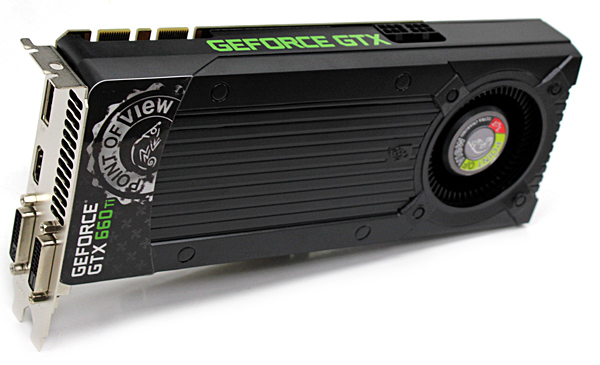
The box points out our GTX 660 Ti Ultra Charged uses Low Leakage Selection chips. One of the things that we really liked is the Borderlands 2 voucher. The card has two dual-link DVIs, one standard HDMI and a DisplayPort connector. There are no extra video dongles in the box.




In the box you’ll find:
Quick Installation Guide
Driver CD
Borderlands 2 voucher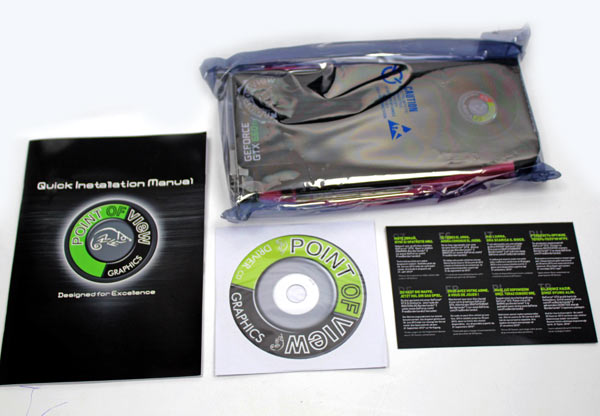
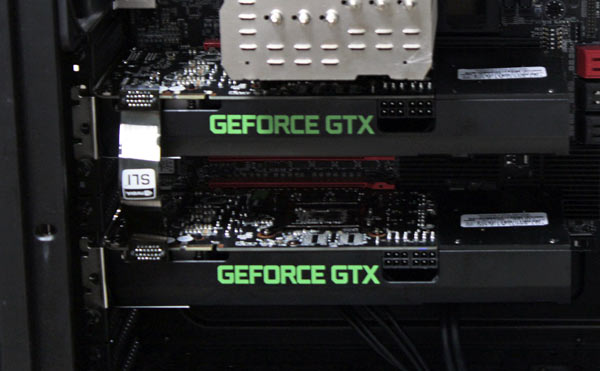
Motherboard: EVGA X79 FTW
CPU: Sandy Bridge-E Core i7 3820 (3.6GHz)
CPU Cooler: Thermalright HR-02 (Thermalright-Europa Distri www.PC-Cooling.de).
Memory: 8GB ADATA DDR3 1600 XPG Gaming series
Harddisk: OCZ Vertex 2 100 GB
Power Supply: CoolerMaster Silent Pro 1000W
Case: CoolerMaster Cosmos II Ultra Tower
Operating System: Win7 64-bit
Nvidia 305.37-desktop-win7-winvista-64bit-english-beta
AMD 12-8_vista_win7_64_dd_ccc.exe
(AMD HD 7970 : 12-6_vista_win7_64_dd_ccc.exe)
(EVGA GTX 690 4GB & Gainward GTX 670 Phantom SLI : 301.34-desktop-win7-winvista-64bit-english-whql)
The GTX 660 Ti Ultra Charged is based on Nvidia’s design. TGT chose Low Leakage chips that can handle high clocks and TGT opted for reference cooling. We’ve heard that the Beast version, which is traditionally faster, will get a special cooler.
The cooler is dual slot and its fan pushes air through the card, towards the I/O panel and the air exhausts.

The cooler has no other exhausts other than those on the I/O panel.
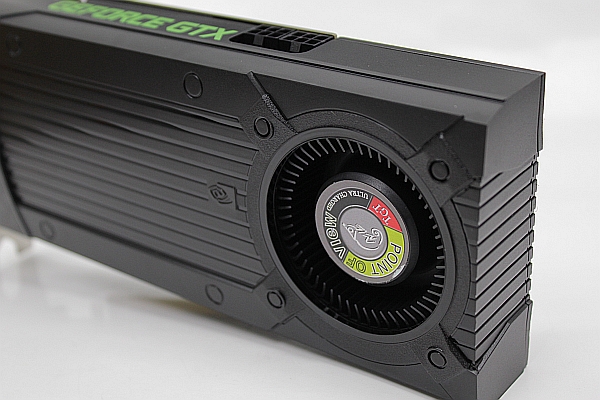
Although we’re talking about a GTX 660 series card, the GTX 660 Ti’s GPU had to be cooled well. The PCB is a bit on the short side so the fan was enclosed in an extended plastic part. The PCB actually ends where the two 6-pin power connectors are placed, so the part below the fan is just plastics.
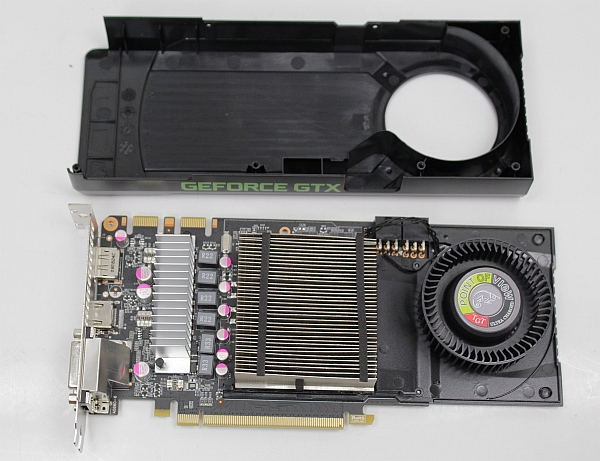
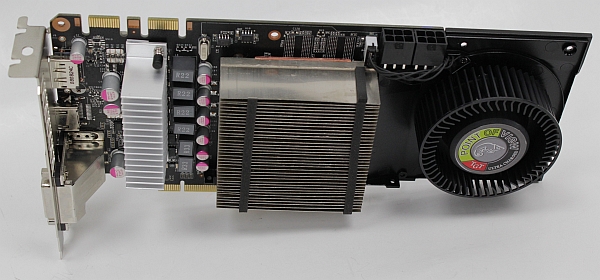
The GPU is cooled by a large heatsink that compensates the lack of heatpipes with the size of the base. The smaller aluminum heatsink on the left cools the power components.
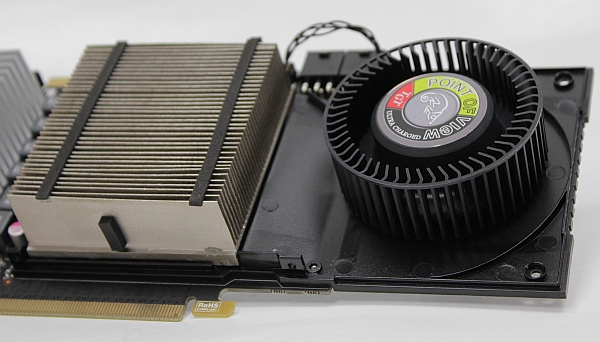
Taking the card apart wasn’t difficult. Cleaning the fan and the heatsink will require taking of the plastic shroud, picture above. Note that this does not void the warranty.
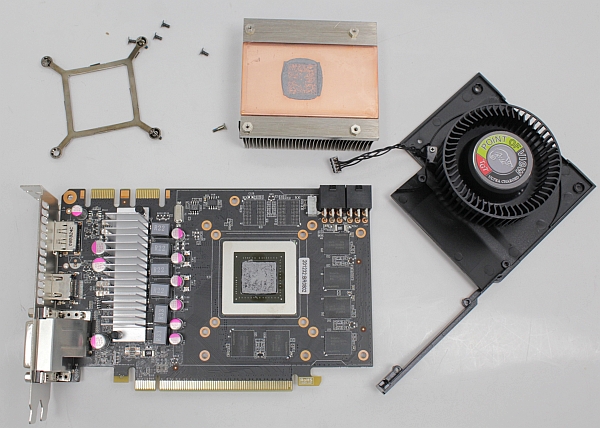
The heatsink does not touch the memory chips. The card uses Hynix memory chips which are commonly used by Nvidia and AMD.
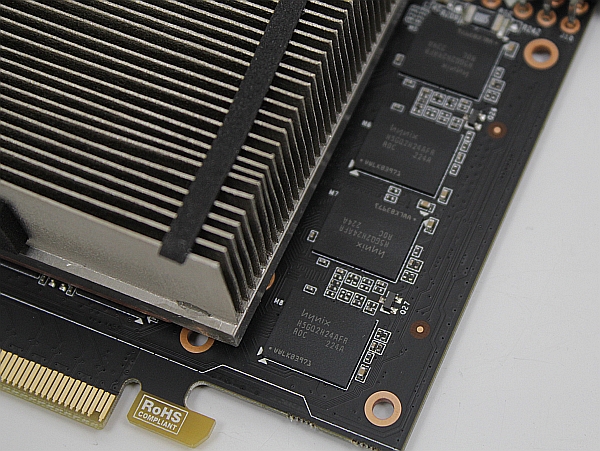
GTX 660 Ti Ultra Charged comes with 2GB of GDDR5 memory. Two memory chips are on the back of the PCB while six are on the front side. You should know that the GTX 660 Ti cards are also available in 3GB flavor.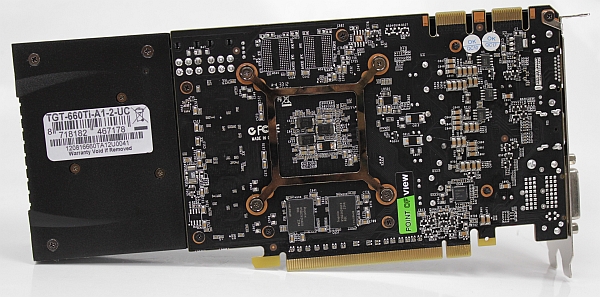
The card has two SLI connectors, so quad SLI is an option.
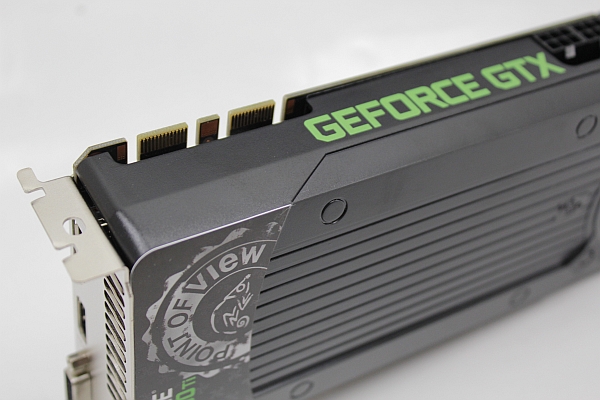
The I/O panel holds the usual, reference set of connectors, two dual-link DVIs, HDMI and DisplayPort connectors. The card can run up to four displays simultaneously.
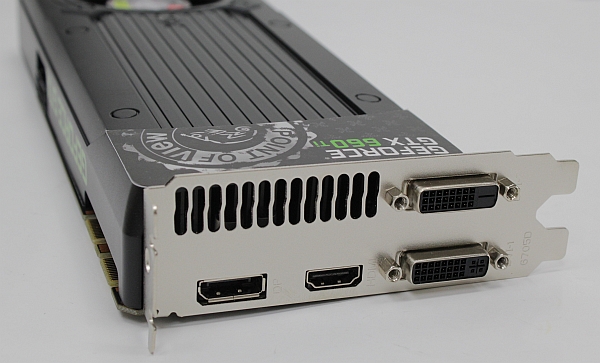
There are virtually no visible differences between the GTX 660 Ti and GTX 670 – they’re almost identical. Below is a picture of the GTX 670 Ultra Charged.
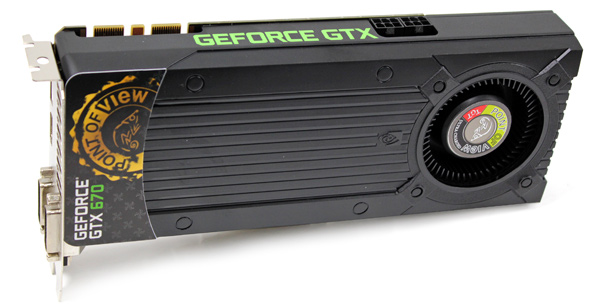
Crysis 2

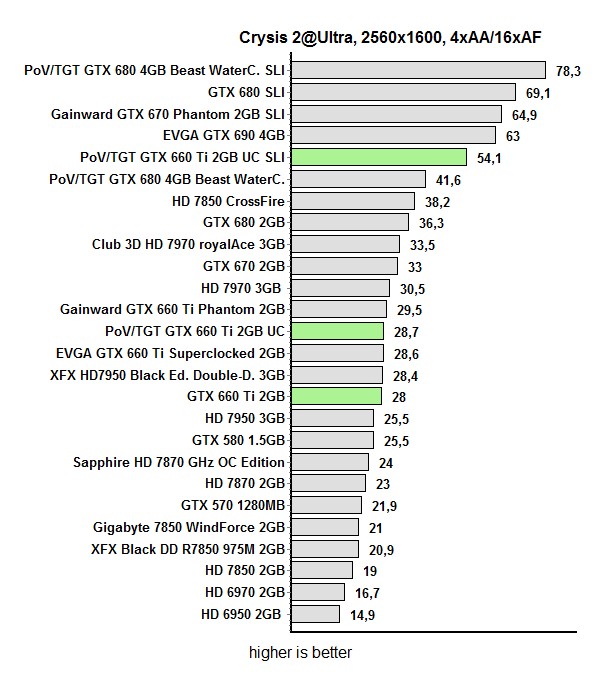
Metro 2033
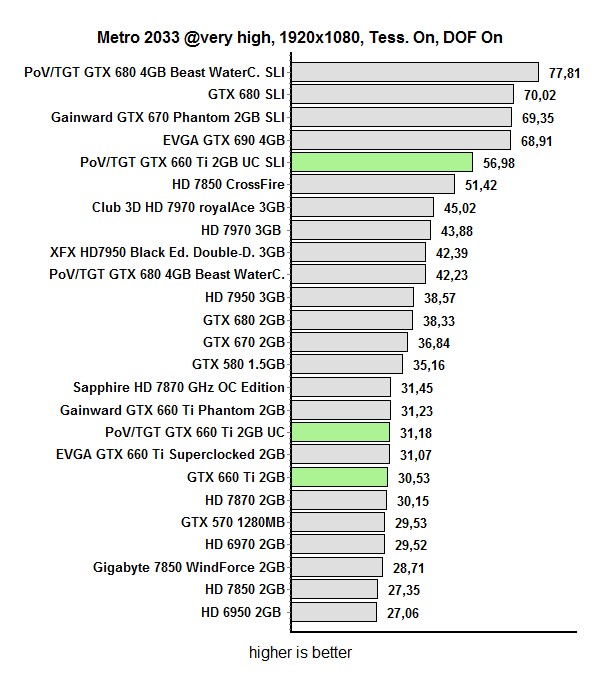
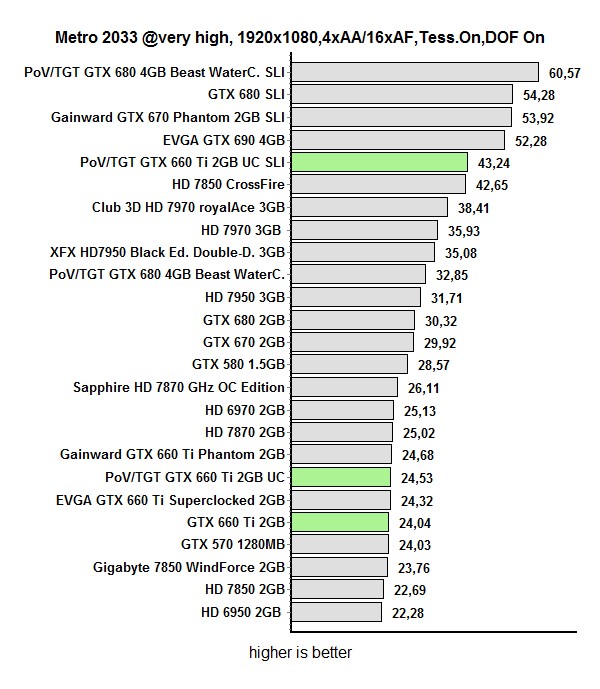
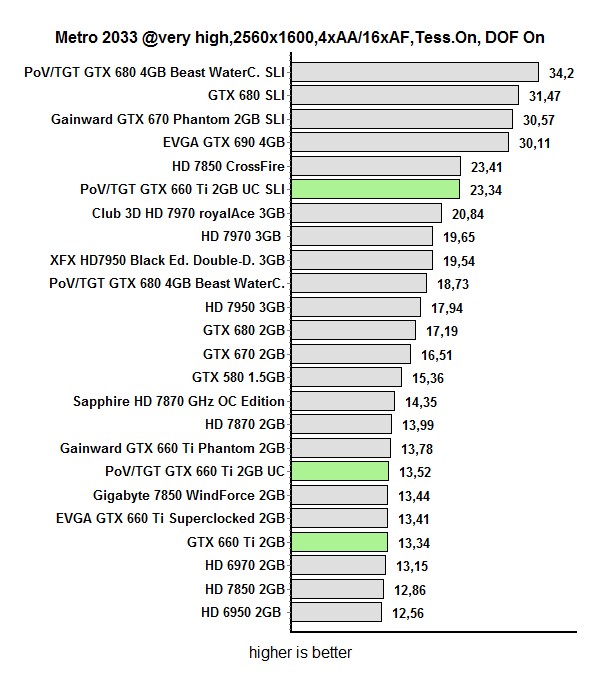
Aliens vs Predator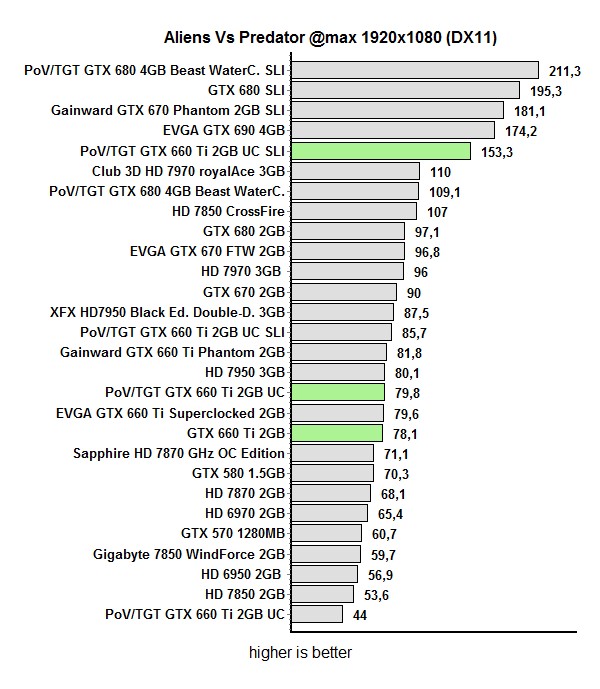
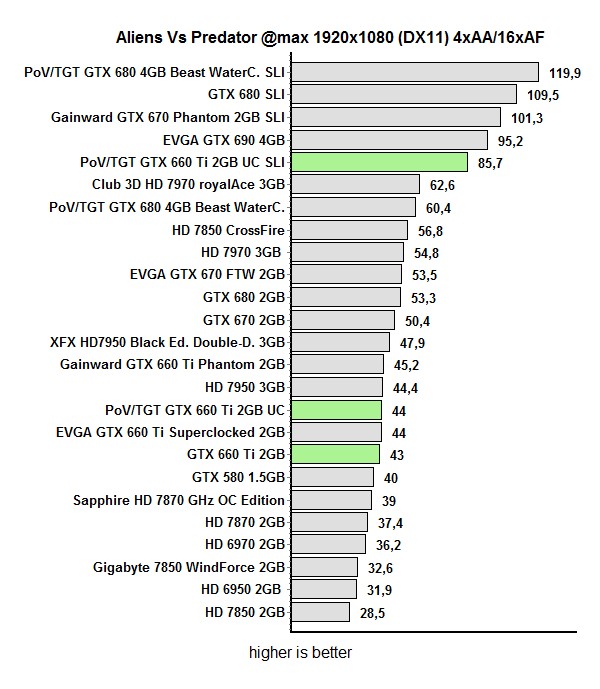
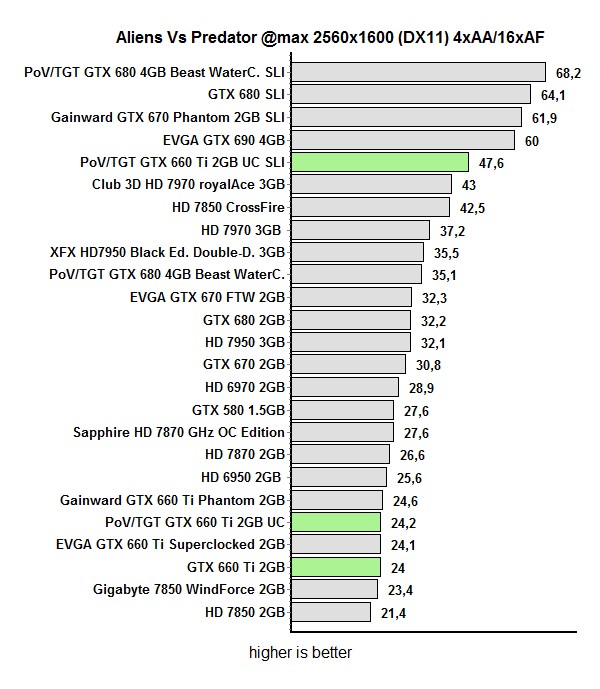
Unigine Heaven

GTX 660 Ti Ultra Charged ran at very high clocks. We managed to set the Base clock at 1113MHz (198MHz overclock), where maximum Boost clock was 1308MHz. We’ve seen that auto-overclocking runs great with the Low Leakage chips. In fact, the GTX 660 Ti Phantom overclocked to 1136MHz managed a Boost clock of 1292MHz, which is less than what TGT’s lower-clocked card is capable of.
Overclocking the memory by 200MHz (800MHz effectively) earned the GTX 660 Ti Ultra Charged the kind of results we get with GTX 670 cards. For our overclocking, we sped up the fan to 80%.
Both GTX 660 Ti Ultra Charged cards showed the same kind of overclocking potential, which made our lives easier in SLI overclocking tests.
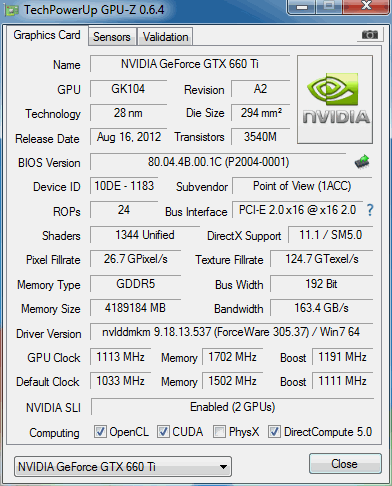


The cooler was never loud while in AUTO mode and never exceeded 61 percent during gaming. It wasn’t particularly loud, but you will hear it. 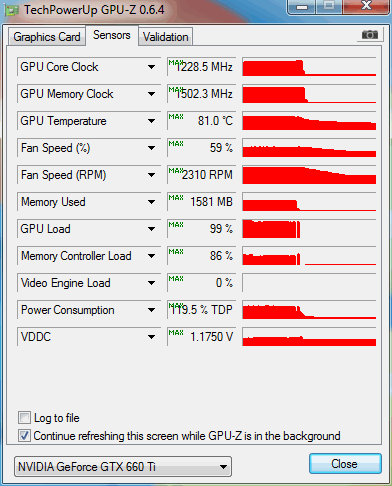
Thermals at default clock
We increased the fan RPM to 80 percent in order to ensure quality thermals as basis for our overclocking. Once the fan is speed up to 80 percent, you’ll definitely hear it well, but it still won’t be too loud.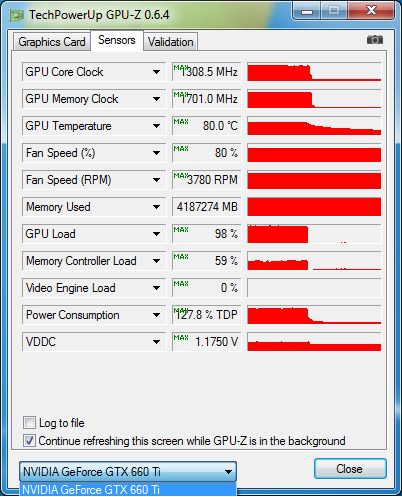
Our overclocking quickly revealed that the card should have better cooling for this sort of stuff. Namely, our GPU (Base clock 1113MHz, Boost clock 1308MHz) ran up to 80°C. 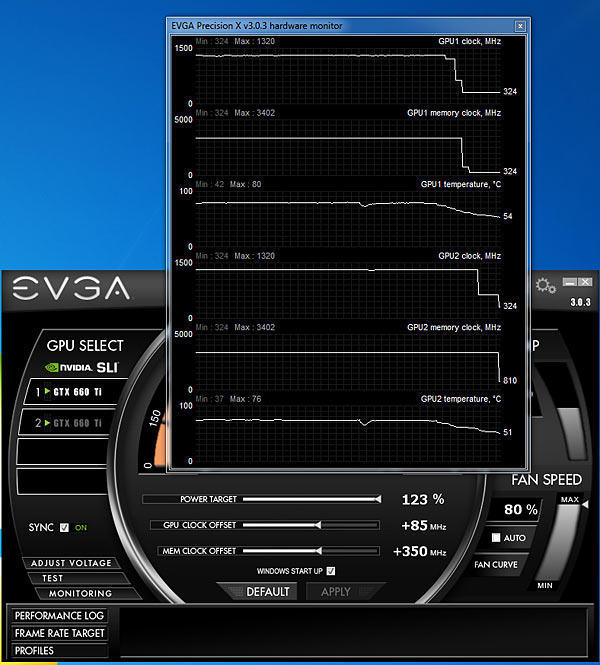
Power Consumption
The factory overclock and "Low Leakage" GPU are the two main things that separate the GTX 660 Ti Ultar Charged from the reference pack. The memory isn’t overclocked, but TGT informed us they are working on a new BIOS that will take care of that as well. We think this decision is a great one, since our testing proved the GTX 660 Ti cards benefit from memory overclocking.
The GTX 660 Ti Ultra Charged is cooled by reference cooling that although serves its primary function, i.e. cooling, does not stay quiet in all scenarios. The card is quiet when idle but you’ll hear it well once it starts working hard. The cards won’t run too loud in SLI, but if you’re looking for silence, then this probably isn’t what you’re after. You may want to know though that TGT is working on a nonreference cooling solution for the GTX 660 Ti as well, which traditionally brings superior cooling and less noise.
A single GTX 660 Ti Ultra Charged will provide smooth sailing at 1920x1080, whereas two can provide some sweet pixel munching performance in multi-display setups as well. Additional overclocking helped us achieve the GTX 670’s scores. Although the cards use the same GPU, Nvidia uses lower memory interface and less ROPs for the GTX 660 Ti.
Nvidia GTX 660 Ti is based on Kepler GK104 and, although a bit pricey, packs a really nice punch. The most affordable GTX 660 Ti currently goes for about €270, while the Ultra Charged with its 118MHz GPU overclock is priced €15-20 higher. For the price of a reference GTX 660 Ti, users can also go for the HD 7950, which offers similar performance.
The GTX 660 Ti Ultra Charged boasts Low Leakage chips that should provide constantly high Boost clocks, although we didn’t see anything radically different from we have seen on other GTX 660 Ti cards. Performance and overclocking were good. If you’re gunning for the GTX 670 but find it too pricey, then make no mistake - the GTX 660 Ti Ultra Charged will get you there, and then some.




